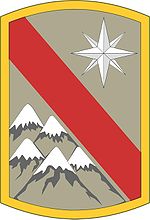A significant reduction in in the time it takes to process personnel actions has been the main benefit (of many outcomes) of a Lean Six Sigma program undertaken by the 43rd Sustainment Brigade stationed at Fort Carson, Colorado.
The ten-month initiative, which began in October, 2013 was designed to improve the processing of forms required for assignment deferments and deletions throughout the Brigade. The goal was to reduce the time of processing to under 30 days. Not only was that time frame not being met, but how the process was being done involved a great deal of variation.
 The Brigade is a FORSCOM combat service support unit providing sustainment support to all the units at the base. It also deploys as an expeditionary force to C2 tactical sustainment and distribution operations.
The Brigade is a FORSCOM combat service support unit providing sustainment support to all the units at the base. It also deploys as an expeditionary force to C2 tactical sustainment and distribution operations.
According to Maj. Amy Jackson, Executive Officer of the 43d SB and the Six Sigma Black Belt leader of the program, “Our baseline was 39.2 processing days with eight days of variation on either side.”
During the pilot, a 75% reduction in processing time was achieved. “We got it down to 10 days with 1.33 days of variation. We could realize a cost savings of $112,000 over the next five years as a result,” Jackson noted.
The program uncovered various issues that were hindering the process, including lack of information, system breakdowns and lack of leader engagement. Assessing the situation led Jackson and her working group of S1s (admins) to develop some “quick win” fixes. These yielded immediate results by addressing potential points of failure in the process.
Jackson believes the benefits of the Six Sigma program were profound and covered many fronts. First, a speedier turnaround of the assignment forms removes much of the uncertainty for the soldier and his or her family, making it easier for them to plan for a permanent change of station. It also benefits the unit gaining the soldier, giving it confidence in information regarding when a soldier will be arriving. It also gives the Human Resources Command more confidence that their personnel issues have all been covered.
To Jackson’s mind, however, the biggest benefit lies in the “digitalization” of all administrative submissions. That will not only improve timeliness, but will save money as well – and it sets the stage for improving other processes moving forward.
Six Sigma and Lean Six Sigma programs like the 43d SB’s are becoming as important to the public sector – and the military in particular – as they are to the private organizations. The Department of Defense is one of the most prominent public sector advocates of lean techniques. And the Army recognizes these efforts through its Lean/Six Sigma Excellence Awards Program, which continues to recognize process improvement achievements.



